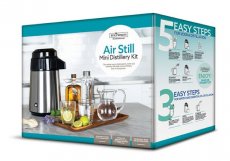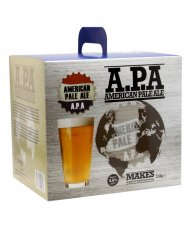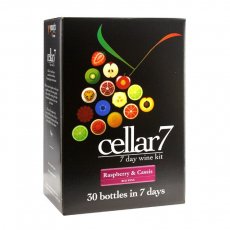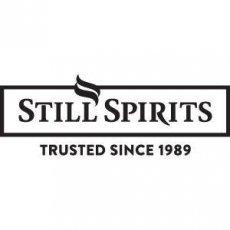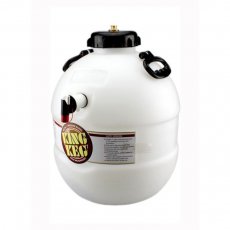What are Hops
An Introduction to Hops by Brew Mart 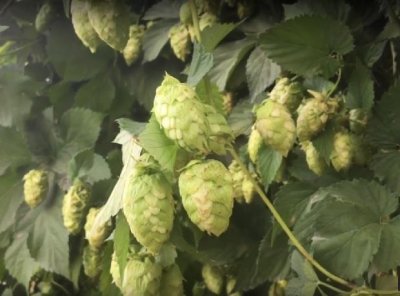
Contents
Hops are little conical flowers from the hop vine. They contain essential oils that can add flavour and bitterness to beers and lagers.
They are bred and farmed across the Western world. Each year they are harvested, dried and packed into sealed containers to keep them fresh. They can then be distributed worldwide for home brewers and breweries to make their favourite beers.
A dried hop flower has numerous properties. The main properties wanted by brewers are found in the lupulin gland. The lupulin gland contains oil resins that confer bitterness, anti-microbial properties, and aroma and flavour. The alpha acid in the lupulin imparts bitterness. Lupulin is a stiff oily substance that is sticky to the touch. Within the plant kingdom, lupulin has unique and complex chemistry. It comprises several volatile oils, which formulate the flavours used in beer.
These oils and acids provide a wide range of aromas and flavours from the cone. Research into this field is constantly developing. Researchers quickly found hundreds of compounds and continue to find and develop more.
Flavours and aromas develop and change during the latter stages of growth through harvesting, kilning and storage. The aromas in finished beer also change as beer ages.
There are no single formulas for flavouring with hops. Brewers often ask for a chart or checklist that matches oils with flavours. It is not that simple.
Since the 60’s, much effort and research has gone into identifying the compound responsible for “hoppy” beer without success. In 1992 BlitzWeinhard Brewing concluded, “Hoppy aroma is probably not attributable to a single component but rather to the synergistic effect of several compounds.”
The development and definition of “hoppy character” have never been clear.
With the continuing development of new hop strains providing a greater range of aromas and flavours, with greater variations in intensity, there has never been a more difficult time to isolate “hoppy character.”
However, this has not stopped the beer makers in their craft. Many people credit American “craft” brewers for driving interest in the new aromas and flavours commonly found in American IPAs.
Brew Mart does not believe it is a coincidence that many of these new aromas and flavours came from newly developed American hops. Brew Mart is quite pleased that this has prompted a response from UK growers and others to continue the development.
Hops are primarily used for adding aromas or bitterness to beers and lagers.
In For the Love of Hops, they provide a concise list of seven positive attributes these flowers contribute to brewing;
- Bitterness
- Aroma
- Flavour (a combination of aroma and taste)
- Mouthfeel
- Foam & Lacing
- Flavour stability •
- Anti-microbial, inhibiting the growth of organisms that damage the flavour and appearance of beers.
According to Wikipedia, “The first recorded use of hops in beer can be found in the 9th century, though Hildegard of Bingen. Many say 300 years later; it is cited as the earliest documented source.” Before this, people used spices and herbs to flavour beers.
The British Hop Foundation states, “In those early times, the only reason for the use of hops was to preserve the beer in excellent condition: the bittering effect was reluctantly accepted by Englishmen.” Hops were also essential in getting beer to British troops in India.
Imperial or India Pale Ales (IPAs) are characteristically heavily hopped with a high alcohol content so that the beer can survive the trip to India. These flowers have an anti-microbial quality, and alcohol is a sterilant.
With modern refrigeration and transportation, these flowers are no longer required to preserve beer. Today, they are primarily used for adding flavour, aroma, and bitterness. Adding depth and complexity to beers and allowing brewers to explore and express their craft with greater variety and technique.
Hops can broadly be divided into three categories.
Bittering, Aroma and Dual Purpose.
This division is mainly based on the Alpha acid percentage.
- 0-5% is typically aroma
- 5-10% dual purpose and
- 10% plus bittering
The division is because the high alpha acid hops are more efficient at bittering. The low alpha acid hops do not bitter efficiently.
What are Hops in a Beer Used For?
Hops can be used at five stages in the brewing process to attain five separate effects on the beer. The severity of the effect can be adapted by increasing or decreasing the amount of hops used or the time the flowers are in situ.
1. Mash Hopping
Mash hopping is where the hops are added directly to the mash tun. The flowers are usually placed on top of the grain bed during sparging. This method gives the beer a better overall balance, character and almost no bitterness.
This method is perfect for milds, stouts, etc., but not for IPA.
Mash hopping is seldom used today, primarily because it requires a comparatively large quantity of hops for a minimal flavour addition. Because the flowers are never boiled, no alpha acids are released, meaning minimal or no bittering takes place, and most of the flavours of the essential oils are lost in the boil.
2. First Wort Hopping
First, wort hopping is where the hops are added to the boil at the start of the lautering process. The flowers remain in the mash during the boil, enabling the alpha acids to be released, contributing “hoppy” bitterness.
3. Bitter Hopping
Bittering Hops are hops added at the boiling stage. Depending on the level of bittering required, brewers will adapt the hop variety, the quantity of hops, and the time the hops are in the boil. The higher the alpha acid content, the more hops and the longer they are left in the boil, the more bitterness will be imparted.
4. Late Hopping
Late hopping is where the hops are added in the last 5-15 minutes of the boil. Though late hopping will add a small amount of bitterness to the beer, the primary purpose is to add aroma and flavour from the essential oils. The effects of these essential oils are lost if boiled for too long. Depending on the hop/oils in question, these oils can be boiled off in 10-20 minutes. That is why they are added at the end of the boil.
5. Dry Hopping
Dry hopping is done after the beer has fermented. Hops are added to the beer either in the fermenter or keg and left for days or weeks, depending on the strength of the hop character required.
Dry hopping adds no bitterness, only aroma and flavour from the essential oils. Again the intensity can be increased by the quantity of hops used and the length of time they are used.
Different types of equipment can be used to add hoppy characters, like the Hop Back and the HOPNIK.
According to Stan Hieronymus, the author of For the Love of Hops, All 35 breweries of the Rock Bottom Breweries group made the same beer, an IPA, but they varied the time and manner of the hop addition. “The exercise gave brewers a better understanding of the impact of different hopping schemes.”
“Each beer received the same significant hop dose for 90 minutes and 30 minutes.
Breweries then followed one of four procedures.
- added one pound of Amarillo per barrel at the end of the boil, with 50 minutes of post-boil residence.
- Added one pound Amarillo per barrel at the end of the boil, 80 minutes post-boil residence.
- Added 1/2 a pound of Amarillo per barrel at the end of the boil, with 80 minutes post boil residence, and 1/2 pound per barrel as dry hops.
- Dry-hopped with one pound of Amarillo per barrel, with no additional kettle addition.
A sensory panel that included 34 experienced tasters later evaluated the beers based on seven characteristics:
- perceived bitterness,
- the intensity of hop aroma,
- the power of hop flavour,
- malt character,
- citrus notes,
- fruity notes, and
- grassy-vegetal notes.
In Assessing the results, the brewery cautioned that these were intensely hoppy beers and that Amarillo is a distinctive hop.
The results were statistically very significant and resulted in several conclusions:
- Longer post-boil residence (procedure 2) resulted in more hop flavour, aroma, and perce
- Longer post-boil residence resulted in more hop flavour than dry hopping, and that hop flavour is best developed in the kettle.
- There was no apparent relationship between measured bitterness and hop flavour or hop aroma. “this result also questioned the usefulness of using IBU as a method of measuring the hop character of very hoppy, IPA-style beers.
- A combination of late and dry hopping (procedure 3) resulted in a more fabulous hop aroma than longer late hopping. However, it appeared there was a diminishing return for additional quantities used in dry hopping.
Little wonder dry hopping has become so crucial at many breweries.”
The utilisation chart opposite, based on a chart by Glenn Tinseth, has been a valuable guide for home-brewers for nearly 20 years
Goldings; The most well-known of English hops. Has spicy, honey and earthy characteristics. Alpha: 4-8 Flavour Intensity: 6
Fuggles; Another well-known English hop. Has grassy, minty and earthy characteristics. Alpha: 4-7 Flavour Intensity: 6
Northern Brewer; A popular German hop. Has spicy, resinous and herbal characteristics. Alpha: 5-9 Flavour Intensity: 6
Citra; The poster child of American “flavour” hops. Has characteristics of mango, tropical fruit and lime. Alpha: 11-14 Flavour Intensity: 9
Cascade; Also an American flavour hop. Has floral, lychee and citrus characteristics. Alpha: 5-9 Flavour Intensity: 9
Simcoe; Another well-known American hop. Has pine, grapefruit and passionfruit characteristics. Alpha: 11-15 Flavour Intensity: 9
Chinook; Again, a well-known American hop. Has grapefruit, citrus and pine characteristics. Alpha: 11-15 Flavour Intensity: 9
There is a huge variety of hops, each with its distinctive character, aroma and flavour.
Using different combinations of hops gives the home brewer the freedom to let their imagination go wild.
Hops are usually infused into the brewing process in much the same way as you would brew tea.
The hops are usually added in 3 stages to the boiling wort to impair different qualities to the beer.
Stage 1 For bitterness
Stage 2 For flavour
Stage 3 For aroma
The bittering strength of the hops is measured by the Alpha acid content, represented in a percentage. The higher the rate, the stronger the hops.
The internationally recognised standard for measuring bitterness in beer is the European Bittering Unit (EBU).
Most beers fall between EBU 25 and EBU 65
The following is a guide to typical EBU levels for the more popular beer styles.
Mild, Brown Ale, Sweet Stout, Wheat Beer, British and Munich type Lagers - EBU 15-25
Pilsner - EBU 28-40
Bitter, Pale Ale, Porter - EBU 30-50
Irish Stout, Imperial Stout, Barley Wine - EBU 4O-75.
Check out all brew Mart's home brew hints & tips
Download our free guide An Introduction to Hops

